The Economics and Statistics Division maintains archives of previous publications for accountability purposes, but makes no updates to keep these documents current with the latest data revisions from Statistics Canada. As a result, information in older documents may not be accurate. Please exercise caution when referring to older documents. For the latest information and historical data, please contact the individual listed to the right.
<--- Return to Archive
For additional information relating to this article, please contact:
June 15, 2017NOVA SCOTIA QUARTERLY POPULATION ESTIMATES AS OF APRIL 1, 2017 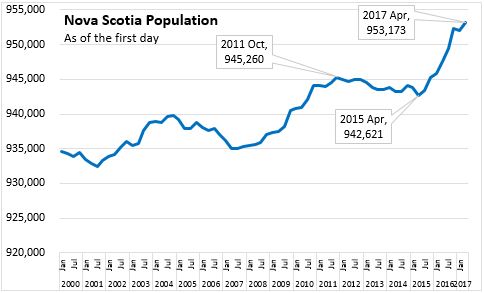
Nova Scotia’s population increased by 1,149 between January 1, 2017 and April 1, 2017. The population as of April 1, 2017 stands at 953,173. This is the highest population estimate reported in Nova Scotia, above the previous high of 952,333 on October 1, 2016. Since April 1, 2016 Nova Scotia's population has increased by 5,670.
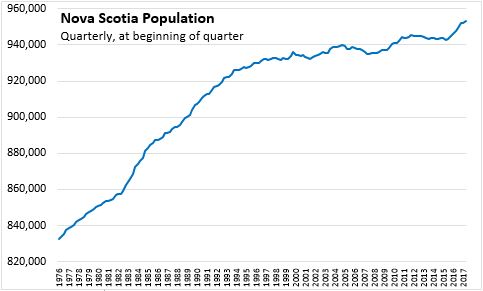
There are seasonal patterns in quarterly population changes, particularly evident in births and international migration. The fourth quarter is often a slow or negative growth quarter for population in Nova Scotia. The most recent population increase of 1,149 is the second largest increase for the first quarter of the year since 1985.
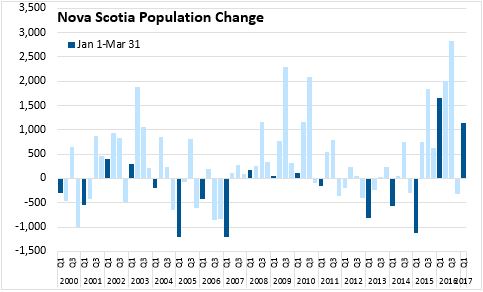
Population growth in Nova Scotia is typically slower than the national average pace. In the last quarter, Nova Scotia’s net population increase amounted to 0.12 per cent of the population as of January 1, 2017. The national population grew by 0.24 per cent over this period. Compared with April 1, 2016 Nova Scotia’s population has increased by 0.60 per cent while the national population grew by 1.23 per cent.
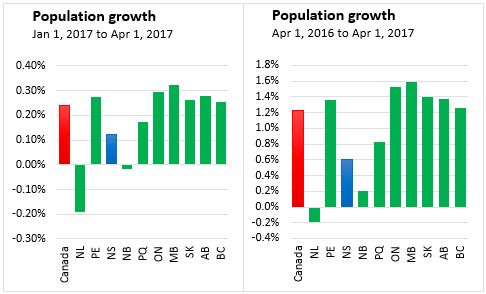
In recent quarters, immigration from other countries has been a strong contributor to population growth in Nova Scotia. Nova Scotia received 1,137 immigrants during the first quarter of 2017. This is the second largest number of immigrants in the first quarter of the year on record, behind the first quarter of 2016's record of 1,849, which included a large number of Syrian refugees.

Nova Scotia’s ‘natural’ population change (the number of births, less the number of deaths) has been negative for several years, with the exception of the regular Q3 increase in births. Q1 is regularly the quarter with the lowest natural population change of the year, as a result of the regular Q1 decrease in births. Between January 1, 2017 and April 1, 2017, there were 2,165 births and 2,508 deaths, amounting to a natural population decrease of 343.
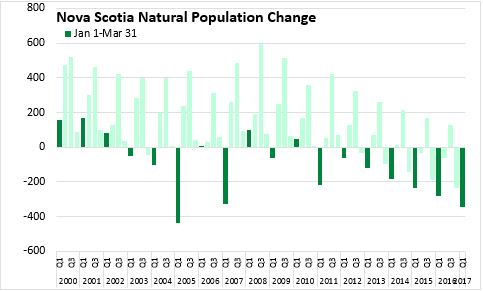
Interprovincial migration has typically been a drain on Nova Scotia’s population. However, from January 1, 2017 to April 1, 2017 there was a net inflow of 464 interprovincial migrants to Nova Scotia, compared to a loss of 405 during the same period of the previous year. This was the strongest quarter for interprovincial migration since the second quarter of 2003.
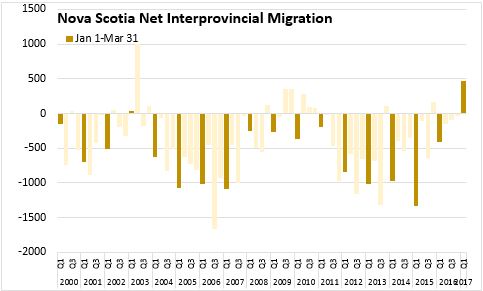
There has been a shift in patterns of interprovincial migration in the first quarter of 2016 compared to the first quarter of recent years. Outmigration from Nova Scotia to Newfoundland and Labrador, New Brunswick, Ontario, Alberta, and British Columbia slowed, while more Nova Scotians left for Quebec and Manitoba.
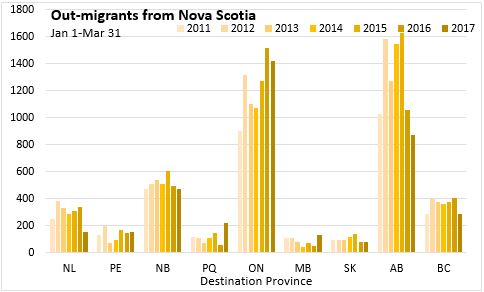
Among those coming to Nova Scotia from other provinces, in-migration increased from every province except Saskatchewan and Alberta, which decreased.
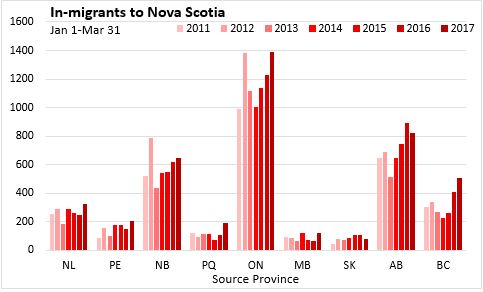
In aggregate, Nova Scotia's net interprovincial migration with Newfoundland and Labrador, Prince Edward Island, New Brunswick, Ontario, Alberta, and British Columbia improved while net migration to/from Quebec, Manitoba, and Saskatchewan declined slightly.
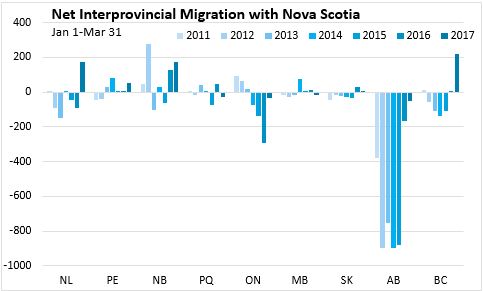
The net increase in the number of non-permanent residents in Nova Scotia has been a significant contributor to population growth over the past two years. The fourth quarter is often a quarter of slow or negative growth in NPRs as a result of permits expiring at the end of the calendar year. In the first quarter, the number of NPRs in the province remained virtually unchanged at 18,380.
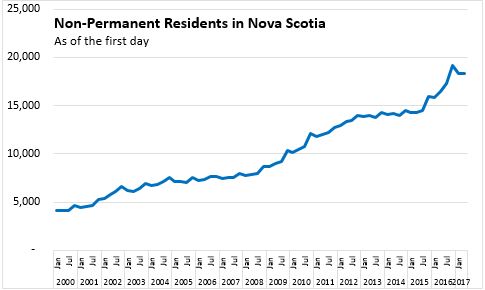
Statistics Canada Cat. No. 91-215
Source:
Quarterly Demographic Estimates, Statistics Canada. Pub 91-002-X (free)
Statistics Canada CANSIM tables: 051-0005 (Population estimates), 051-0017 and 051-0045 (Interprovincial Migrants), 053-0001 (Births and Deaths), 051-0037 (International Migrants)
<--- Return to Archive